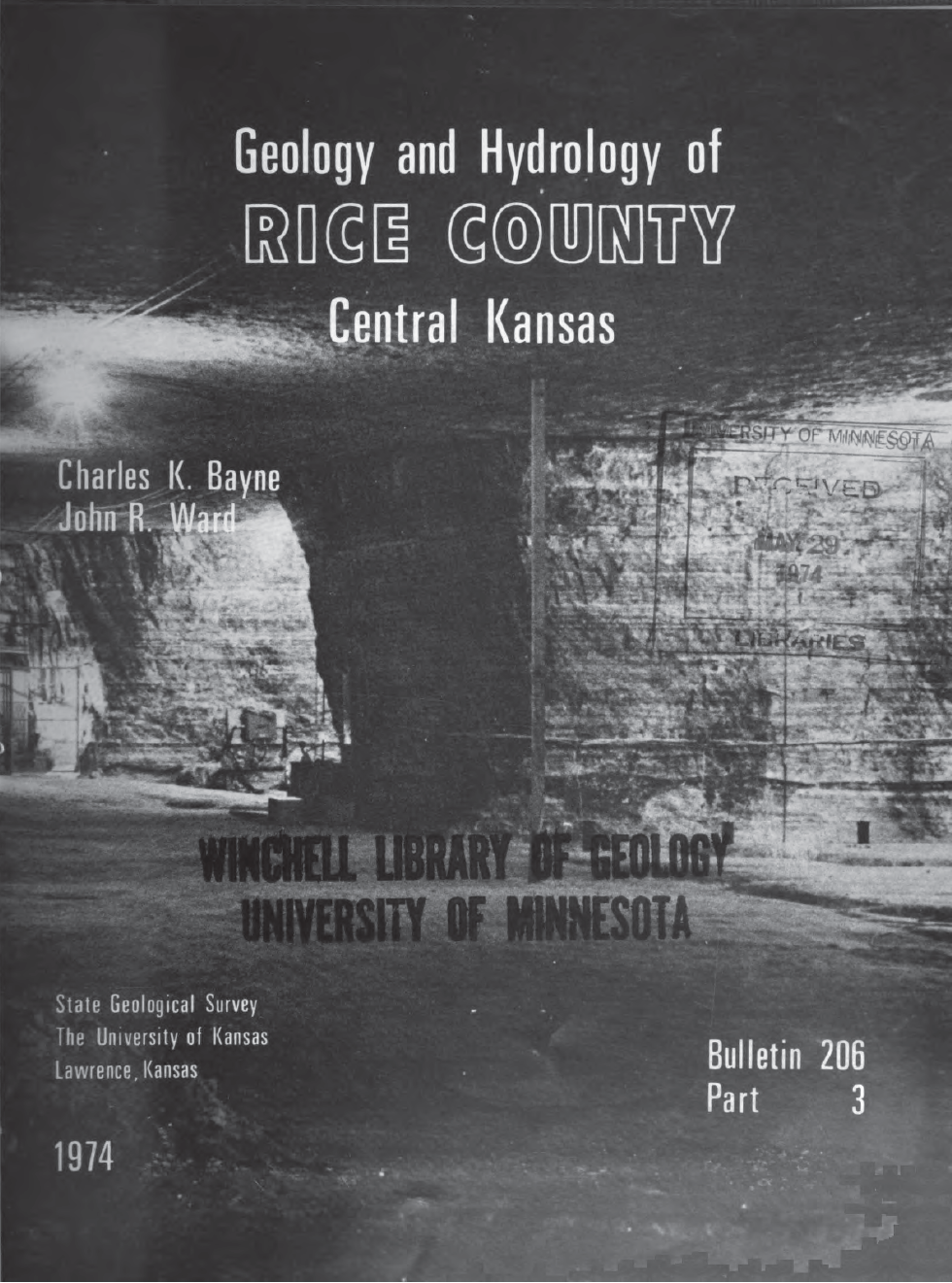Geology and Hydrology of Rice County, Central Kansas
DOI:
https://doi.org/10.17161/kgsbulletin.no.i206.22254Abstract
Sedimentary rocks of Paleozoic age and younger underlie Rice County to a depth ranging from 3,700 to 4,100 feet. The oldest formations that crop out are the Ninnescah Shale, Stone Corral Formation, and the Harper Sandstone of Early Permian age. These formations are unconformably overlain by rocks of Cretaceous age consisting of the Cheyenne Sandstone, Kiowa Formation, and Dakota Formation. Deposits of Pleistocene age that mantle most of the county are principally eolian sediments on the uplands and fluvial sediments in the valleys.
The principal aquifer is in the Pleistocene fluvial deposits where yields to irrigation wells of 1,000 gpm (gallons per minute) are common and, locally, yields may be as much as 2,000 gpm. Sandstone aquifers in the Kiowa and Dakota Formations commonly yield an adequate supply of water for domestic and stock wells, and may yield as much as 150 gpm.
The chemical quality of water in the Pleistocene deposits is a calcium bicarbonate type and is very hard. Water in the sandstone also is a calcium bicarbonate type where the overlying Pleistocene aquifer is in hydraulic connection. If an appreciable thickness of shale separates the aquifers, the water in the sandstone may be a sodium bicarbonate type, Highly mineralized water from formations below the Kiowa may occur at shallow depths as a result of local contamination by oil-field brines or industrial wastes.
The principal mineral resource in 1969 was petroleum produced from 76 oil fields and 19 gas fields. Salt deposits ranging in thickness from 200 to 400 feet are a potential resource that have been utilized to a minor extent,
Downloads

